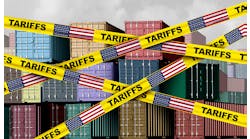While companies are quickly reformulating their supply changes as conditions change almost daily in terms of transporting goods, they are also looking for advice on how to improve their supply chains going forward. To help companies review their options, Deloitte recently issued a report, COVID-19, Managing supply chain risk and disruption.
One part of the report aks the question; "Which companies will mitigate the impact from this event?" Here is an excerpt from the report that answers that question.
Some companies are better prepared than others to mitigate the impact.
These companies have developed and implemented supply chain risk management and business continuity strategies. They have also diversified their supply chains from a geographic perspective to reduce the supply-side risks from any one country or region. They have multi-sourced key commodities or strategic components to reduce their reliance on any one supplier, and they had considered inventory strategy to buffer against supply chain disruption.
Some companies are better prepared than others to respond to this event.
These companies have built strong relationships with key suppliers and have put systems in place to provide visibility across the extended supply network to better understand their risks and drive specific actions based on their priorities. They developed agility within their production and distribution networks to quickly reconfigure and maintain supply to global demand, and they invested in supply chain planning and control tower solutions to better sense and respond, and even predict, supply chain issues.
Other companies are scrambling.
These companies are overly reliant on a single geography or a single supplier for key products. They don’t have enough visibility across the extended supply network to see their risks. They don’t have the systems to understand their inventory status, to project stock-outs of direct materials and optimize production, or to project stock-outs of finished goods to optimize customer allocation, and they don’t have flexible logistics networks to ensure the flow of goods in a profitable manner.
One tough lesson that all companies have learned from this pandemic is that a global supply can have multiple “potential points of failure and less margin of error for absorbing delays and disruptions,” the report points out.
However, the good news is that technology can offer ways to mitigate that risk by improving visibility across the complicated global supply chain.
These technologies are creating digital supply networks where functional silos are broken down and thus able to an organization to see end to end. Currently, these networks are designed with disruption in mind and thus are able to reconfigure and therefore mitigate the impact of disruptions.
The report points to IoT, cloud computing, 5G, AI, 3D printing, and robotics as technologies that continue to improve supply chain efficiency.
The digital supply network “must not only be aligned with business strategy after it is set but be integral to its formulation." the report concludes. "And, risk management will be an integral element of that design, as risk management and business continuity is also an integral element of overall business strategy. From a risk management perspective, the key will be to build a resilient supply chain that not only seeks to reduce risks but also is prepared to quickly adjust and recover from any unanticipated supply chain disruptions that occur.”



